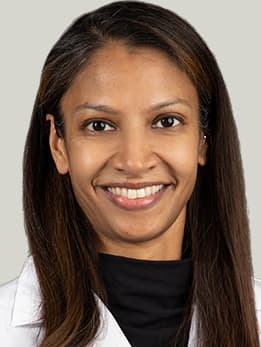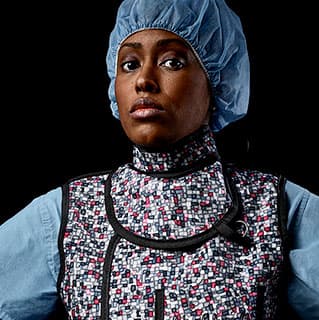20-year-old determined to walk again after multiple gunshot wounds

If 20-year-old Dionte Tate had his way, he’d be training to become a diesel mechanic, mowing his parents’ lawn and beating his cousins on the basketball court.
Instead, he’s focused on a single goal: to walk again.
On a frigid afternoon in January 2019, Tate had a meeting with his new manager prior to starting a job at an automotive shop in the south suburbs of Chicago. Still saving up for a car of his own, he got a ride from a friend. The two were stopped at a red light when an unknown car pulled up alongside their vehicle, and gunfire suddenly surrounded them.
For Tate, it was one big blur, and the assailants and motives remain unknown to this day. His friend was shot once, and two bullets struck Tate, tearing through his lower back, spinal cord and stomach. He quickly realized he had been paralyzed from the waist down.
“After it happened, I tried to crawl out of the car,” he said. “But I couldn’t. On the way to the hospital I was already telling myself, ‘It is what it is, and you just have to work to get back to where you want to be.’”
Emergency crews rushed Tate to a nearby suburban hospital where he was resuscitated and stabilized. Upon recognizing he needed specialized care from a Level 1 trauma center, the team summoned Chicago’s only hospital-based air ambulance to transport him to the University of Chicago Medicine.
Within minutes, two UChicago Medicine Aeromedical Network (UCAN) flight nurses arrived and whisked Tate off in a helicopter.
Satrice Tate, his mother, received a call instructing her to go to UChicago Medicine’s Hyde Park trauma center to meet her son. “They told me, ‘The damage is so bad. We don’t know if he’s going to make it,’” she said. “He even died momentarily, but they brought him back.”
Tate’s family members — including his father, Darius; his twin brother, DeAndre; and his aunt, Michelle Foster — rushed to the hospital, enduring hours of waiting before knowing for sure that their loved one would survive the senseless act of violence.
“I’ve never felt that level of fear or anxiety in my life, ever,” Satrice said. “It was almost as if I could feel my blood going through my body. I felt every emotion I had inside of me. My thoughts were so loud; the fear was screaming.”
A Fighting Advantage
UChicago Medicine is the only health system in the region with a hospital-based flight team like UCAN. Specialized trauma and critical care nurses, EMS pilots and communication specialists transport between 700 and 800 gravely ill or injured patients each year to the closest appropriate care facility, either by helicopter or by ground transport when a flight is impossible.
The team can care for the range of emergent illnesses and injuries in patients from pre-term babies through older adults. In addition to providing efficient transportation, UCAN is equipped to take ultrasounds, give blood transfusions and perform life-saving treatments during travel to increase the likelihood of survival.
Additionally, UCAN works closely with the trauma surgery team at UChicago Medicine to provide a seamless transition from transport to treatment.
“The beauty of our interdisciplinary team is that we have the ability to make a call in the field that can save time for the trauma team and give them a more complete picture when a patient arrives at the hospital,” said Jannie White, BSN, RN, CFRN, a UCAN flight nurse who has worked on the team for nearly two decades.
White and fellow flight nurse Kristen Smith, BSN, RN, CFRN, kept Tate’s heart pumping and his body from losing too much blood, setting the trauma team up for success in the operating room.
Coordinated Care
When the helicopter landed at UChicago Medicine, a trauma care team met Tate on the helipad to rapidly assess his condition and determine the next steps. Although critically ill, he was stable enough to undergo several tests to prepare the operating surgeon for exactly what lay ahead, thanks in part to the care provided by the UCAN team.
One of the many benefits of a Level 1 trauma center like UChicago Medicine’s is the collaboration among physicians and specialists to get each patient exactly the treatment needed as quickly as possible. This comprehensive system begins with trauma prevention and carries through to injury rehabilitation. Because traumatic injuries vary vastly, from penetrating wounds to car accidents, the trauma teams have to be prepared for anything.
Based on Tate’s condition, it was clear he needed to get to the operating room immediately.
Trauma surgeon Priya Prakash, MD, spent more than six hours meticulously tending to Tate’s wounds, including controlling liver and kidney bleeding. When it became evident Tate was not moving his lower limbs, she called the neurosurgery team to evaluate his spinal cord injury. Additionally, Prakash coordinated with specialists in radiology, interventional radiology, neurology, urology and, eventually, physical and occupational therapy to treat the full spectrum of Tate’s needs.
Amid the chaos and urgency, Prakash and her team saved Tate’s life and prepared him for the long recovery ahead.
“It’s incredibly hard to have a young patient and talk to him about an injury that is life-changing,” she said. “But I made sure he knows he’s not alone and that he can live a full, productive, normal life; he’s just going to have to learn a different way of doing things.”
A Twin Connection
With soft brown eyes and an easy smile, Tate is Satrice and Darius’ third child, older than his fraternal twin brother by just six minutes. After having a boy and a girl several years prior, Darius wanted to try for another boy — and the couple ended up with a two-for-one special, Satrice jokes. The family is tight-knit, including with their many relatives in the Chicagoland area, all whom have supported Tate throughout his recovery. But the twins’ bond is special.
When Tate was shot, his twin was acutely aware of his fight.
“DeAndre was picking up on everything Dionte was going through,” Satrice said. “He told us, ‘Dionte is struggling. He is fighting for his life.’ DeAndre is also how we knew Dionte would make it through the incident alive before he came out of surgery. His twin sensed it.”
The shooting took place just five days before the twins’ 19th birthday. Dionte and DeAndre spent the day together in the ICU, surrounded by family, balloons and cupcakes. DeAndre remained by his brother’s side for the majority of his 25-day inpatient hospital stay.
Determination during Recovery
Tate has always been focused and driven. Satrice describes him as the hardest working of her four children. During high school, he would help around the house or juggle several jobs.
This resilient attitude and strong work ethic translated to his recovery process from the start.
Just days after the shooting, while still in the intensive care unit, the former high school athlete was trying to sit up, determined to get out of bed.
Upon release from the hospital, Tate started inpatient rehabilitation at Shirley Ryan AbilityLab in downtown Chicago. He progressed to outpatient rehab just three weeks later and worked with therapists to strengthen his muscles, build his endurance and regain mobility. He has approached every challenge with the determination to walk again.
“He was a great patient,” said Shirley Ryan AbilityLab physical therapist Matt McGuire, who worked with Tate for more than a year. “He’s attentive to instructions, figures things out very quickly, and is easy to work with. He never came in with a surly mood or unwilling to work. He always wanted to get moving.”
His team at Shirley Ryan AbilityLab identified Tate as a potential candidate for a clinical trial they are conducting with a type of Knee-Ankle-Foot Orthosis (KAFO), Ottobock’s C-Brace. Unlike traditional KAFOs that fully lock the knee joint to provide stability for people who cannot control their knee or ankle joints, the C-Brace is a computerized, hydraulic unit that allows the knee to bend naturally during the gait cycle. Use of a C-Brace can allow walking with less compensation from other parts of the body, promoting better safety and mobility.
This type of brace is traditionally used for patients who are much further into their recoveries than Tate, in part because it requires a high level of strength and muscle control.
However, for the study, Shirley Ryan AbilityLab investigators are looking to see if introducing a C-Brace earlier in the recovery process can help a person with an acute spinal cord injury get stronger, faster and avoid compensations that can be detrimental to other parts of the body. So far, 16 people have qualified for the study. Investigators are looking to enroll 30 by the trial’s end; half will have traditional KAFO support and the other half will use the C-Brace.
Resilience and Results
When Tate first tried C-Braces about five months after his accident, he could take only a few steps without tiring. He needed McGuire to guide his foot forward and provide constant assistance. In the year since, Tate has made extraordinary strides. He can put on both C-Braces himself and walk with them “beautifully,” with only the support of a walker, McGuire said. He can change his walking speed and pattern, indoors and outdoors, showing immense gains in both strength and endurance.
Even during the COVID-19 pandemic in March, when Shirley Ryan AbilityLab outpatient operations were largely closed and his sessions stalled, Tate maintained his strength and continued his exercises at home, picking right up where he left off when rehabilitation started again, said research prosthetist-orthotist Shenan Hoppe-Ludwig.
“He was a joy to work with and a lovely person,” Hoppe-Ludwig said. “For someone so young with an injury that’s so impactful on his life, he’s found a way to make the best of what he can control. His positive attitude and ownership of his rehab process greatly contribute to his success.”
Tate’s therapy has now ended, and he will continue recovering on his own. In addition to the progress he’s made with C-Braces, he also taught himself how to swim and to climb stairs unassisted. Still, he dreams about running up and down the basketball court once more.
“It’s a tough fight, every day, every hour,” Tate said of his recovery. “But if I want to walk again, I have to fight for it.”
Though focused on his recovery, Tate’s life is not defined solely by his injury. This January, he and DeAndre will celebrate their 21st birthdays, this time from a hotel suite instead of an ICU bed.
Tate is looking for the meaning within his struggle and hopes his story might inspire others to not give up, even after having life upended by tragedy:
“One of the ways I motivate myself on a daily basis is to tell myself, ‘You’ve made it this far; you can do it. You’ve made it, so you’ve got to do something with it.’”

Priya Prakash, MD
Priya Prakash, MD, is a fellowship-trained surgeon who specializes in trauma, critical care and emergency surgery.
Learn more about Dr. Prakash
Sickness is relentless. So are we.
We are a leading community of physicians, researchers and game changers. We embrace challenges and turn them into opportunities to make a difference in your life.
Learn more about UChicago Medicine's undaunted approach to care.